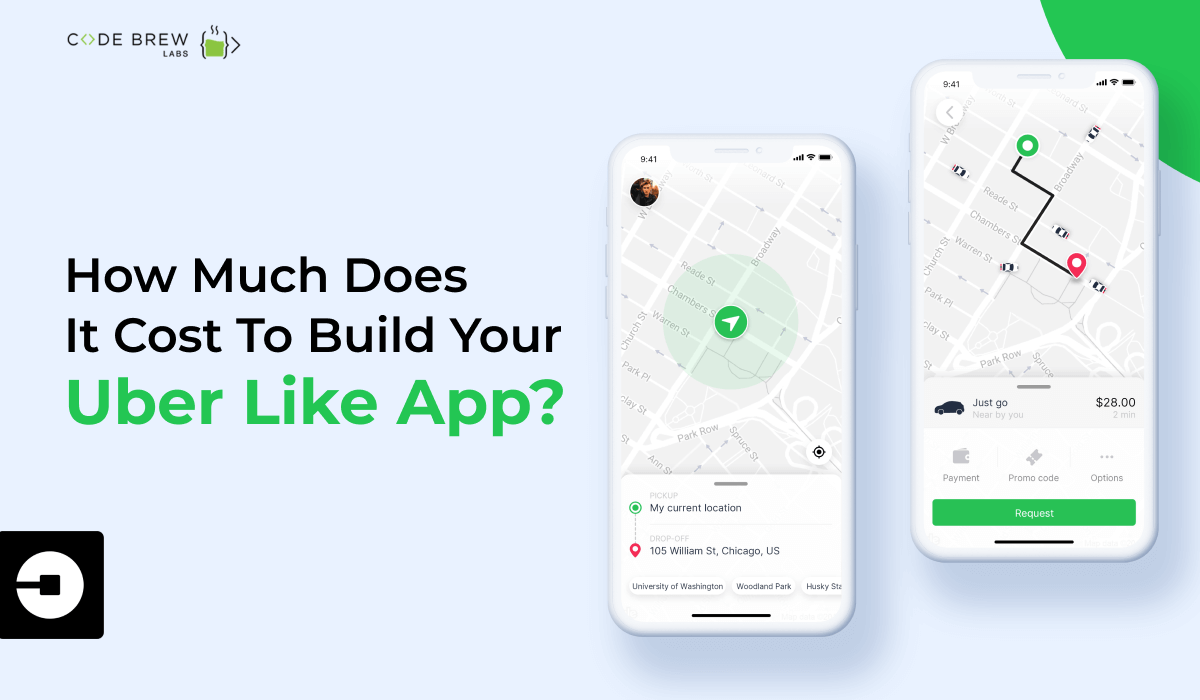
The overall success rate of Uber is clearly resulting in the high demand of Uber clone apps. Somewhat it has made SaaS applications the hottest business model in the current times. And it’s obvious that many entrepreneurs are looking forward to developing enterprise SaaS applications like Uber.
Table of Contents
Experts say that SaaS is likely to continue to lead the global market segment as it has grown to $116 billion profit in 2020. As a result, Uber clone apps are expanding and growing the overall SaaS industry. With this, entrepreneurs are considering it as the right time to build and launch an Uber clone app to scale business to matchless heights.
Now when it comes to developing and launching an Uber-like app, the most crucial question is ‘how much does it cost to build an Uber like app?’
Uber’s global ride sharing market size has grown to 75.4 billion USD making it a prominent name in the industry worldwide. Recent data shows that up to 93 million people utilized Uber cab services in a month in 2020’s fourth quarter.
Some more stats –
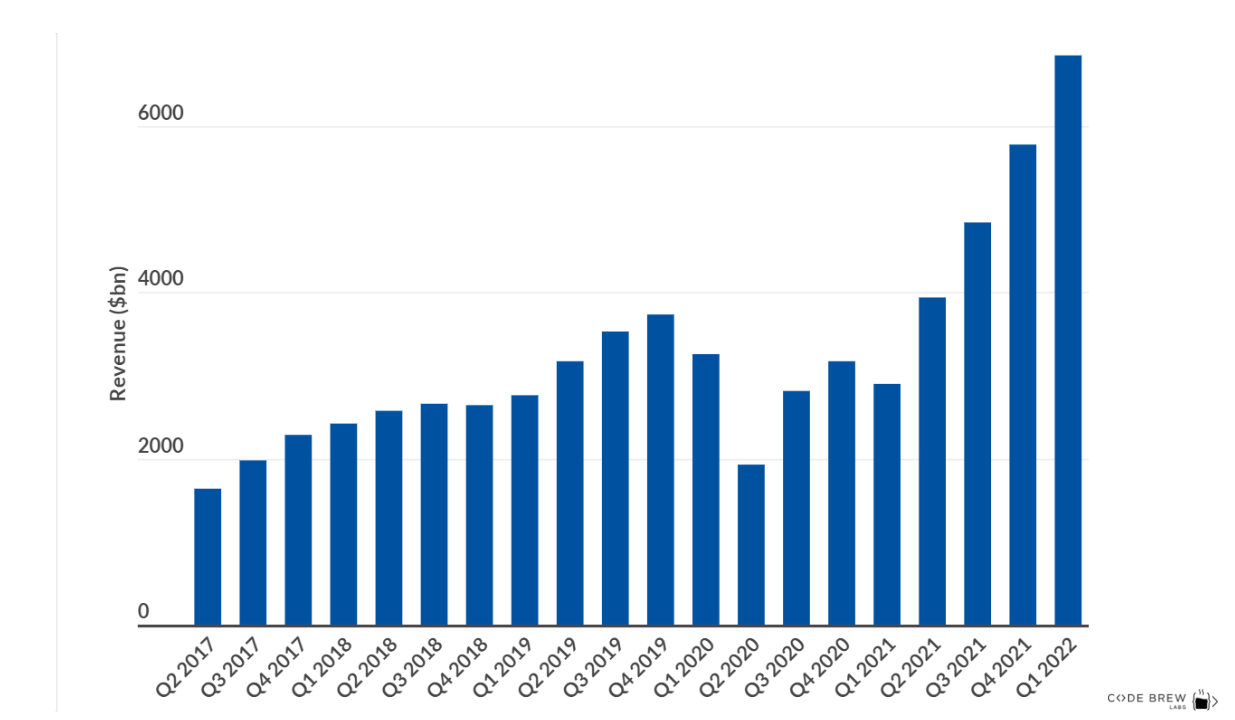
The app consists of multiple interfaces and panels including –
All these interfaces consist of a set of features facilitating complete operational efficiency and leverages. This is something taking the taxi app business to the next level for sure. Now before we learn about its actual functionality let’s sail through some common features of all three platform interfaces.
The user can login or sign up in order to create a personal account and unlock the line of features and functionalities.
Development Time – 120-400 hours
Users can enter, edit and update their profile information to get better location accuracy. Further, this helps in easier ride booking.
Development Time – 100-250 hours
It is one of the most talked about third-party integrations that enable GPS location tracking for hassle-free ride booking and real-time updates. Its primary role is to use GPS technology to navigate you to the right path to your destination. The best part is developers can have direct access to Geolocation API to seek end users’ exact location data via this unique feature.
Development Time – 230-300 hours
Users are notified with quick push notifications to keep them updated with the ride booking and other updates.
Development Time – 80-100 hours
Drivers can connect with the passengers requesting a ride via in-app call or text feature. It enables calls or chats promptly, helping the drivers get quick updates on the passenger’s location.
Development Time – 200-350 hours
Multiple payment integration options enable the users to get access to multiple payment options including – credit card, debit card, PayPal, UPI, and many other options. The ride rates vary depending on the ride type chosen. For instance, the fare prices will vary for both – Black Porsche Car, an SUV, and so on. Besides, there is a set model to calculate the overall fare including –
Development Time – 120-400 hours
Users can rate the ride at completing the ride with the driver. This feature pops up automatically after the ride completes. Here, the user can rate or review the drivers’ services.
Development Time – 50-80 hours
Drivers can log in or sign up using a unique set of credentials. This enables the driver to create a personalized account and unlock the advanced features.
Development Time – 120-400 hours
Drivers can enter, edit and update their profile information to get better location accuracy. Further, this helps in easier ride booking.
Development Time – 120-400 hours
It is one of the most talked about third-party integrations that enable GPS location tracking for hassle-free ride booking and real-time updates.
Development Time – 230-300 hours
Drivers are notified with quick push notifications to keep them updated with the ride-booking and other updates.
Development Time – 50-80 hours
Multiple payment integration options enable the drivers to get access to multiple payment options including – credit card, debit card, PayPal, UPI, and many other options.
Development Time – 100-210 hours
Drivers can view the total earnings of a month or quarter to analyze the progress or profits made. This feature helps to keep a track of revenue done.
Development Time – 80-150 hours
Drivers can accept or reject ride requests based on the charges and location.
Development Time – 100-110 hours
Drivers can connect with the passengers requesting a ride via in-app call or text feature. It enables calls or chats promptly, helping the drivers get quick updates on the passenger’s location.
Development Time – 80-100 hours
The admin can manage the list of drivers listed in the app. Be it adding or removing a driver from the app or viewing the rides booked by a particular driver, the admin has got complete access to all such insights.
Development Time – 150-200 hours
The admin can view passengers registered on the app and manage them accordingly. Managing them includes – adding or removing the passengers (based on a legit reason), viewing the passengers’ information to provide 24*7 support related to ride booking, and other issues experienced.
Development Time – 120-200 hours
Admin gets complete control over the earnings done through the booked rides. This enables the admin to keep a track of profits earned in the set time duration.
Development Time – 80-100 hours
Admins decide the commission to be split between the drivers and the on-demand taxi business.
Development Time – 100-130 hours
Note – The overall development time mentioned is estimated. It may vary based on the developer’s experience, skillset, proficiency, and technology stack used.
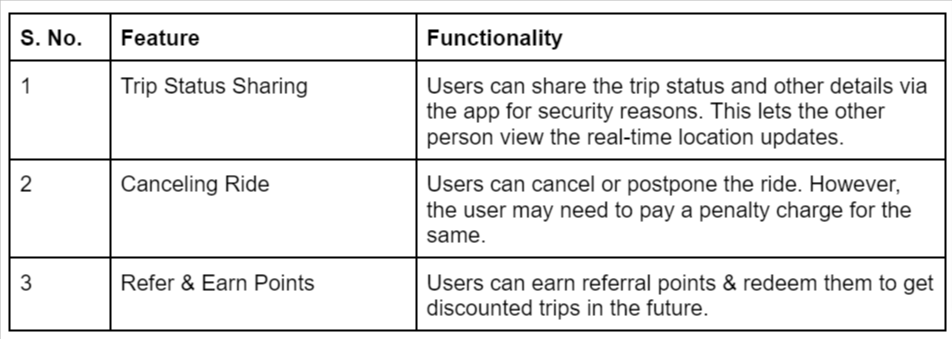
The overall estimated cost to build an app like Uber depends on the series of desired features. The more the features, the higher the cost. Thus, it’s important to be prudent and evaluate the viability of each feature you add to your requirement list.
Also, remember that developing an enterprise-level SaaS app is similar to construction. You need to work on every minor detail, especially when working on the app blueprint (often referred to as ‘software requirement specifications).
Therefore, jotting down the essential & trending features becomes the biggest need of the hour.
The Uber clone app works differently for different locations. Plus, the features and functionalities may vary depending on the type of app.
An on-demand taxi app model works on a set of steps including –
Drivers and passengers are required to log in and create a personalized account on the app.
Development Time – 100-120 hours
Passengers can search for a particular location via in-app Google Maps. This lets the users enter a particular location (destination) to book a ride.
Development Time – 120-400 hours
Once a driver confirms the ride booking for the mentioned location, the ride begins with a real-time Google Maps display. This is to give timely updates.
Development Time – 200-350 hours
Users need to pay for the ride when completing the trip with the driver. This unlocks the multiple payment options to help the passengers and drivers to initiate a transaction and complete the trip successfully.
Development Time – 100-130 hours
The passengers (users) can rate and review the ride based on the quality standards mentioned.
Development Time – 50-80 hours
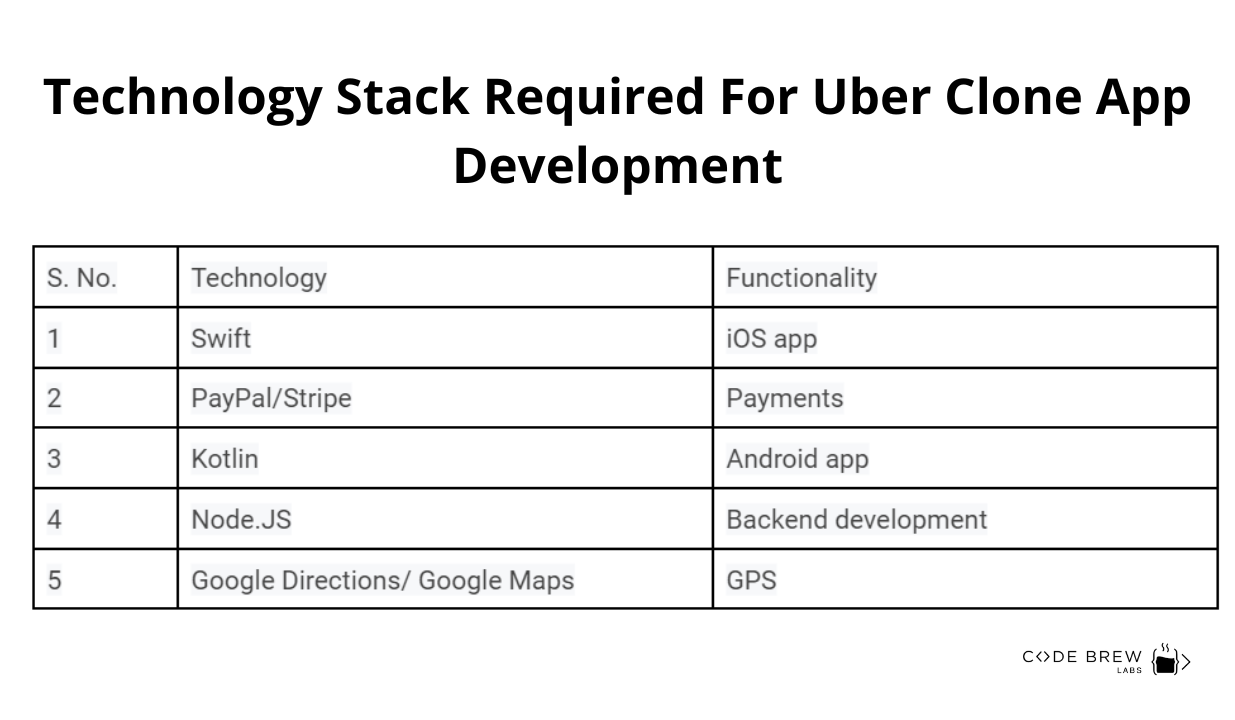
If you as an entrepreneur are totally new to this industry, ensure that you begin with building and launching the Uber clone app on a single platform. This approach is ideal to save your money while helping you brand your app adequately in the marketplace.
Here, you can think of playing smart and preferring a hybrid development approach using MBaaS (mobile backend-as-a-service) to launch your MVP wisely.
The cost to develop an Uber clone app depends on a series of factors including –

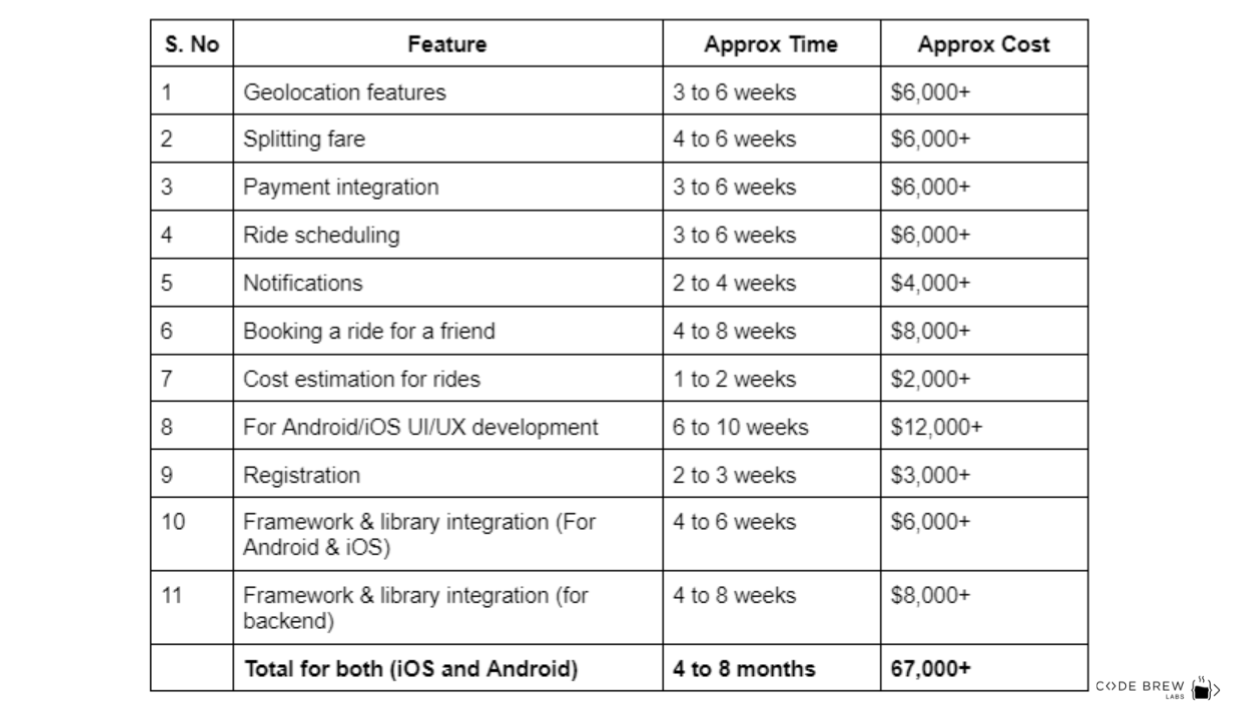
Thus the overall cost to develop an app like Uber is likely to cost you around $67,000 to $1,50,000 for a hybrid app (compatible with both Android and iOS devices). Also, you may need to include the overall price for admin panel development cost beginning from $14,000 at least.
No wonder freelancers prove less expensive than many IT outsourcing companies. But then always keep in mind that there are many trust and work-quality constraints of hiring freelancers.
Where technology outsourcing companies follow a predefined roadmap keeping a hawk’s eye on progress; freelancers may fail to handle your app development project with the same level of professionalism and sincerity. One of the biggest reasons is their being involved in multiple projects at one time.
We know and understand your zeal to be one of the Unicorn businesses in the forthcoming years. That’s why we continue to encourage our pool of knowledgeable developers to explore and inherit industry-rich trends.
Our development team holds decades of enterprise-level experience in developing, deploying, and maintaining taxi-based service apps like Uber. From drafting an app plan to executing it on the right path, we have got you covered. All you need is to initiate a discussion with our subject matter experts.
So, connect & let’s brew some deserving success stories for you!
